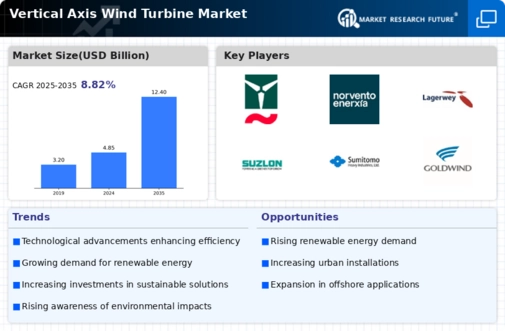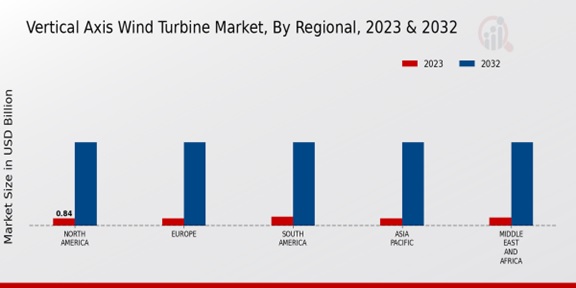The Vertical Axis Wind Turbine Market is poised for substantial growth in the coming years. Driven by increasing demand for renewable energy sources and government initiatives to reduce carbon emissions, the market is projected to exhibit a CAGR of 8.82% during the forecast period of 2024-2032.
In 2024, the market is valued at USD 4.49 billion and is anticipated to reach USD 9.6 billion by 2032. Key trends shaping the market include technological advancements, such as the development of more efficient and cost-effective turbines and the expansion of offshore wind farms. Additionally, growing investments in research and development are expected to further drive market growth.
In November 2023, China began a pilot scheme that sought to deploy vertically-axis wind turbines in skyscrapers to capture wind energy in high population centers.
In February 2024, Several countries in Europe came together and declared an intent to deploy large-sized VAWTs into the ocean in the North Sea to boost offshore wind digestion.
In August 2023, In pursuance of its hinter offshore renewable direction, BlueFloat Energy tested a VAWT project in Australia.
In 2023, the Swedish company SeaTwirl, which focuses on manufacturing wind turbines, signed a memorandum of understanding with Kontiki Winds, which is involved in a multi-early phase revolving offshore wind farm development Norwegian company. The target of their joint work is the electrification of offshore oil and gas and other offshore wind development.
In July 2023, SeaTwirl, at the same time in July 2023, announced the confirmation of its first commercial order of deployment of its vertical-axis floating wind turbine, which poised well with its transition to floating wind turbine development.
Since November 2024, Merck KGaA has been the leader in the innovation competition of Sodium Acetate Trihydrate, especially in regards to its applications in food and beverages. Merck's expansion in this area has been propelled by the compound, which is rapidly gaining acceptance as a preservative and taste ingredient. However, the organization has recently introduced a green product line to cope with rising environmentally friendly consumer demands.



















Leave a Comment